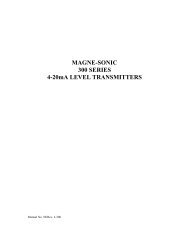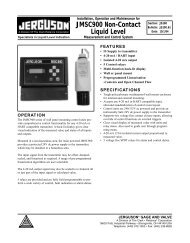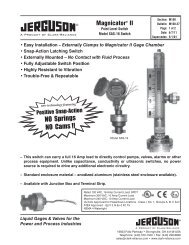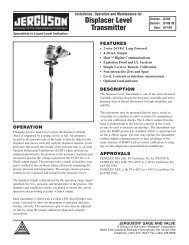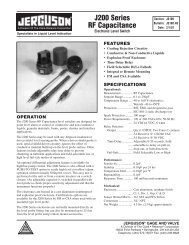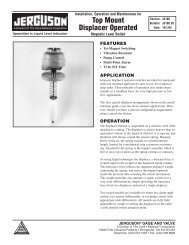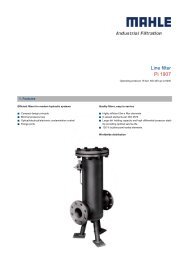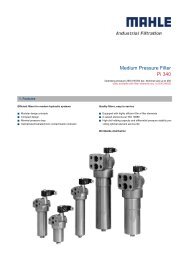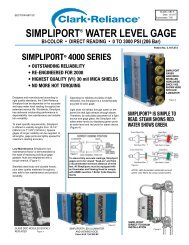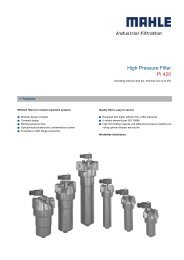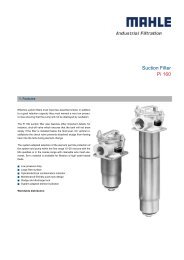E189-A-2 Probes.pdf - Clark Reliance
E189-A-2 Probes.pdf - Clark Reliance
E189-A-2 Probes.pdf - Clark Reliance
You also want an ePaper? Increase the reach of your titles
YUMPU automatically turns print PDFs into web optimized ePapers that Google loves.
Hot torquing is suggested for all probes. However, the column must be isolated from service with the drain valve openbefore re-torquing the probes.The hot torquing procedure will extend probe sealing gasket life and should be performedas follows:1. Partially open steam valve to warm up the column with the drain valve slightly open.2. Close steam (and water) valves to isolate the column.3. Open the drain valve completely.4. Re-torque as instructed above.5. Return to service by closing the drain valve and opening the steam and water valves.B. InterwiringThe wires attached to the probes must be of high temperature type in order to withstand the heat. <strong>Clark</strong>-<strong>Reliance</strong>suggests the following types of wire:Maximum ApplicationPressure (PSI)10001001 to 3000WireSpecification18 Ga. Stranded conductors, Teflon insulation rated at300 VAC and 200ºC(Belden #83029, Alpha #5857, or equal)18 Ga. Stranded conductors, Teflon treated glassbraided insulation rated at 300 VAC and 400ºC, Nickelcoated copper conductor U.L #5182(Radix #MGT-4502 or equal)The high temperature wires attached to the probes can be routed to a local junction box or directly to the control unit. Ifa junction box is used, a low cost 18 Ga. Multi-conductor cable may be used to carry the signal to the control unit. Wesuggest Belden #8467 or equal.Note: When installing the high temperature wire to the probe, use an open end wrench to prevent theProbe assembly from turning while tightening the wire terminal nut. Use a ¼” wrench for both thecompression nut and the terminal nuts on T and V type probes. ZG, ZB, FG, and FB type probes require a ½”wrench for the compression nut and a 3/8” wrench for the terminal nut.C. TroubleshootingTroubleshooting is only necessary in the event that a control relay fails to energize or de-energize. In the event that therelay fails to de-energize during blow-down, the cause is a failed (short circuited) probe. The probe should be replaced.In the event that a relay fails to energize, the following steps should be taken:1. Verify probe wiring to the appropriate probes from each relay.2. Verify water level in the column.3. Exchange relays to verify function. If the problem moves with the relay, then replace the relay.Any additional questions should be directed to your local <strong>Clark</strong>-<strong>Reliance</strong> Representative, or to the Factory.Phone: (440) 572-1500 Fax: (440) 238-8828“Always use only genuine <strong>Clark</strong>-<strong>Reliance</strong> replacement parts!”



